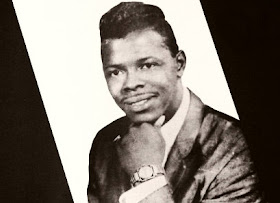Herb Alpert (born March 31, 1935) is an American trumpeter who led the band Herb Alpert & the Tijuana Brass in the 1960s.
Born in the Boyle Heights neighbourhood of Los Angeles, California, Alpert grew up in a family of Jewish heritage with parents who had immigrated to the United States from Ukraine and Romania. Although his father worked as a tailor, he was also a gifted mandolin player. Alpert's mother also taught violin lessons, and both Herb and his brother David (a drummer) were introduced to music at a young age. Alpert first started out taking trumpet lessons at age eight, and by his teens was playing in dance bands and experimenting with recording equipment.
Graduating high school in 1952, he did a two-year stint with the Sixth Army Band, after which he enrolled at the University of Southern California. While there, he spent two years as a member of the USC Trojan Marching Band. It was during this period that he befriended Lou Adler, teaming up with the budding lyricist and music impresario for a series of songs on Keen Records. Together, they scored several Top 20 hits, including Jan & Dean's "Baby Talk" and Sam Cooke's "Wonderful World." Working under the name Dore Alpert, the trumpeter also recorded his first album as a singer, issuing "Tell It to the Birds" on his and partner Jerry Moss' Carnival Records in 1960. Realizing the Carnival name was already in use, Alpert and Moss renamed their label A&M.
The pairing between Alder and Alpert was short lived. Alpert left to form his own band. It was called Herb Alpert and the Tijuana Brass. He also co-founded a recording entity with his friend Jerry Moss. They named it A&M Records. It is at this record company where Alpert did his recordings. He rose to fame with songs like The Lonely Bull, A Taste of Honey among others. His music was a blended flare of instruments. He experimented with Latin, Jewish, Mexican musical instruments. Alpert scored his first Top Ten hit album with 1964's South of the Border, a further collection of mariachi-influenced arrangements and pop covers by the Beatles, Antonio Carlos Jobim, and others. In 1965, his band was popular than the Beatles. They sold 13.5 million albums. He also had success as a solo musician.
In 1968, Alpert scored his first number one single (and the first number one for A&M) with a rare vocal turn on a rendition of Burt Bacharach's romantically laid-back anthem "This Guy's in Love with You." He disbanded the Tijuana Brass in 1969. With the absence of Tijuana, A&M record relied on budding musicians. It had a host of them. New names like Joe Cocker, Cat Stevens, The Carpenters and others came up.
As A&M continued to thrive throughout the early '70s, Alpert shifted his focus somewhat from making his own music to his label duties. In 1973, he also wed former Sergio Mendes & Brasil '66 singer Lani Hall. Nonetheless, he regularly recorded throughout the decade. He made another milestone in 1979. With his song The Rise, he got the number one spot as a vocalist and instrumentalist. As a solo artist, he incorporated other artists in his recordings. This helped him release hit singles from the1960s to the 1980s.
Alpert's 1980 album, Beyond, was also a Top 40 success. It was followed by 1982's Fandango and 1985's Wild Romance, both of which found him further embracing a smooth crossover sound. Released in 1987, Keep Your Eye on Me included the Top Five single "Diamonds," which featured a guest vocal from Janet Jackson, one of A&M's major successes of the decade. In 1986, Alpert also established the Herb Alpert Foundation, a philanthropic organization dedicated to establishing educational, arts, and environmental programs for children.
Following the sale of A&M to PolyGram in 1990 for a sum in excess of $500 million, Alpert and Moss founded Almo Sounds in 1994. There, he released 1997's Passion Dance and 1999's Colors. Among the artists signed to Almo were luminaries including Garbage, Gillian Welch, and Imogen Heap. Also during this period, he branched out into artistic venues, exhibiting his abstract expressionist paintings and co-producing a number of Broadway successes, including Angels in America and Jelly's Last Jam.
In his music career, Alpert won 7 Grammy Awards. Some of them are Record of the Year, and Best Jazz Instrumentalist in 1965. The Best Non Jazz Instrumentalist in 1966 among others. He also has an honorary doctorate Degree from Berklee School of Music, for his support to the industry. At Hollywood Hall of Fame, he has a Star in his name.
In
2007, Alpert and Lani Hall began touring regularly and recording together and
in 2013 they released the third of their albums Steppin' Out, which won a Grammy for Best Pop
Instrumental. Alpert was awarded the National Medal of Arts by President Barack
Obama and First Lady Michelle Obama in 2013. In 2021 he released his latest studio album Catch
the Wind, which featured renditions of such beloved songs as "Smile,"
"America the Beautiful," and the Beatles' "Eleanor Rigby." Herb
Alpert is currently touring across America and Canada and the UK with upcoming
concerts.
(Edited
from SunSigns & AllMusic)




















































